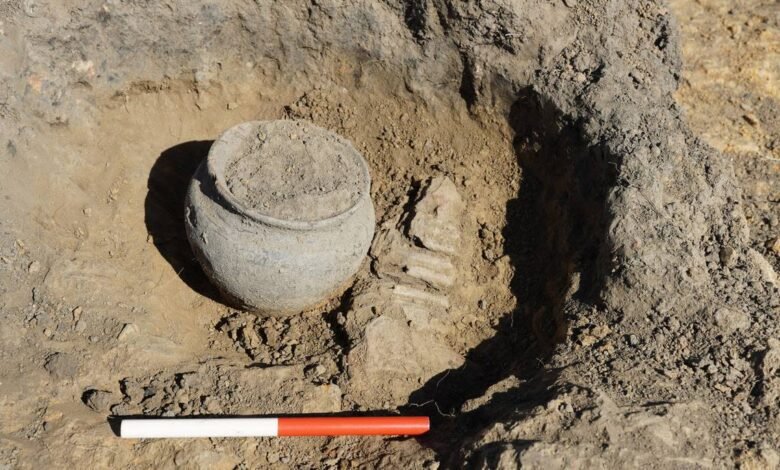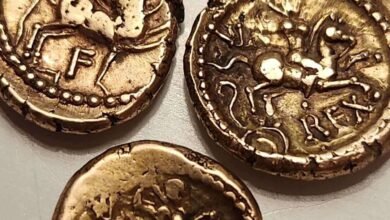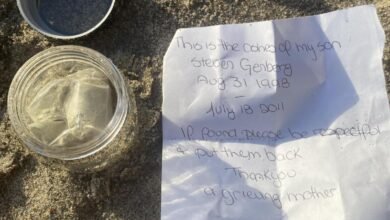‘Extremely rare’ treasure found in a forgotten ancient Roman settlement in Britain. Do you see it

Shovel by shovel, archaeologists sifted through the brownish dirt of the United Kingdom and poured it into a bucket. They excavated the ruins of a medieval coastal community.
But their search uncovered another lost settlement – one with an “extremely rare” treasure.
Archaeologists have unearthed the ruins of a forgotten ancient Roman settlement during an excavation of a medieval dockyard in Smallhythe Place, National Trust Archeology said in a Facebook post on February 23. The settlement was over 1,700 years old, spanning the first to third centuries AD
“We found tiles with the stamp of the Roman fleet (Classis Britannica), ceramics including an intact pot, and evidence of buildings, boundary features and pits,” archaeologist Nathalie Cohen said in the post.

Discover more archaeological finds
What do we learn about the past? Here are three of our standout archeology stories from the last week.
→ The 2,400-year-old underground discovery baffled experts for decades – until now
→ 800-year-old toy unearthed after fire station demolished. Do you see it
→ Metal detector discovers ‘unique’ gold treasure from 1,400 years ago. Do you see it
But one artifact stood out: a head carved from clay about 2 inches tall.
Archaeologists identified the head as part of a pipe clay figure of the ancient Roman god Mercury, the organization said. A photo shows the creamy white carving.


“It is incredibly rare to come across the head of a Mercury figure made from pipe clay,” Cohen said.
Mercury was the ancient Roman deity of fine arts, trade and commerce. “While he is the most common god for metal figurines, pipe clay examples are extremely rare. To date, fewer than ten have been found from Roman Britain,” archaeologists said.


Matthew Fittock, an expert on ancient Roman ceramics, explained that “pipe clay figurines were used primarily by civilians for private religious practice in domestic shrines and occasionally in temples and the tombs of often sick children.”
“Rather than throwing away pieces because they were broken, there is evidence that intentionally breaking some figurine heads was an important ritual practice,” he said in the post. “In graves you usually find whole figures.”


Archaeologists found no further fragments of the Mercury figure.
“This complete figure would likely have depicted Mercury standing, either wearing a chlamys (a short cape) or naked, holding a caduceus (a staff with two intertwined serpents) in his hand,” the National Trust wrote in a Feb. 22 press release .
The pipe clay head and other ancient Roman artefacts will be on display at Smallhythe Place from February 28, the organization said.
Smallhythe Place is in Kent, a county on the southeast coast and approximately 50 miles southeast of London.
The search for an ancient Roman pottery workshop leads to a much older “exciting” find
Man stumbles upon ancient Roman artifact weighing 13,000 pounds in riverbed. Do you see it
A metal detectorist stumbles upon a 4,000-year-old weapon on the way to his car. Do you see it



